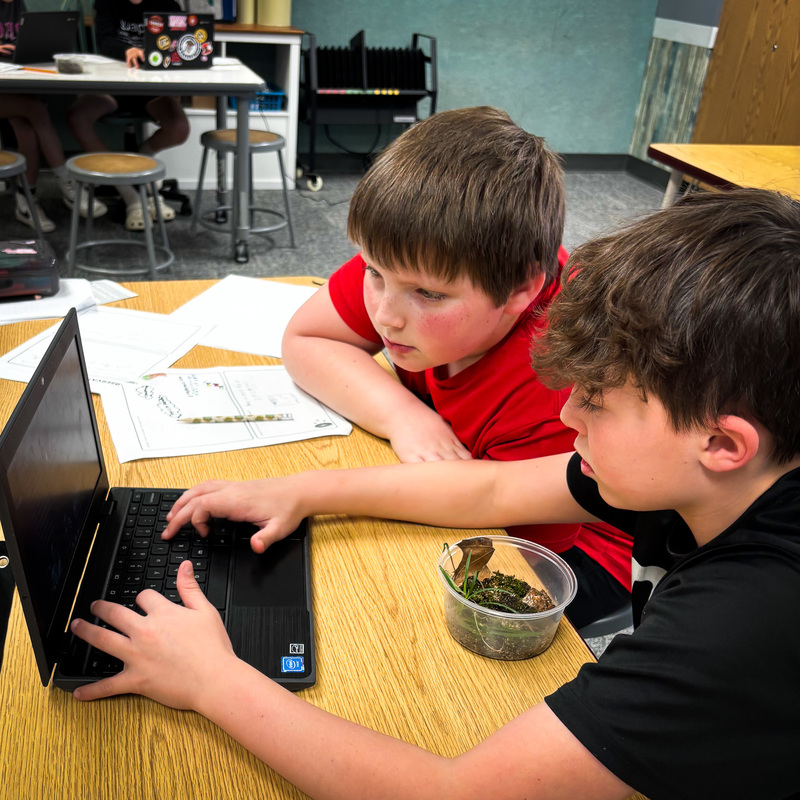A great way to see a lesson come to life is through labs, projects or science activity. And that’s exactly what Ms. Robbins’ 5th grade class did! They rolled up their sleeves, used their green thumbs and built a fully functioning jar terrarium to simulate the conditions of Earth’s ecosystems.
This creative and fun activity helped students grasp key Indiana science standards such as water cycle, ecosystems and energy flow. By planning, collaborating, building and observing their mini-ecosystems, the 5th grade class better understood how sunlight, soil, air and water are all necessary to support life.
 Using scientific inquiry questions, Ms. Robbins encouraged students to ask and answer important questions like:
Using scientific inquiry questions, Ms. Robbins encouraged students to ask and answer important questions like:
What is the purpose of each layer in the terrarium?
What role does condensation play in this closed environment?
How does the water cycle occur in a sealed jar?
Each student then shared their terrarium design and findings with the class. Some of the topics discussed by students were ecosystem producers (moss), the effect of light in the energy cycle, and evidence of water moving through its cycle inside their jar.
 While jar terrariums are cute, this activity was about much more than growing a plant. On a small scale like this Ms. Robbins was able to help students understand how Earth works and make the scientific process more approachable.
While jar terrariums are cute, this activity was about much more than growing a plant. On a small scale like this Ms. Robbins was able to help students understand how Earth works and make the scientific process more approachable.
Over the weeks students’ terrariums became a living, breathing science experiment - and a reminder that learning about the environment can start right at your desk.

